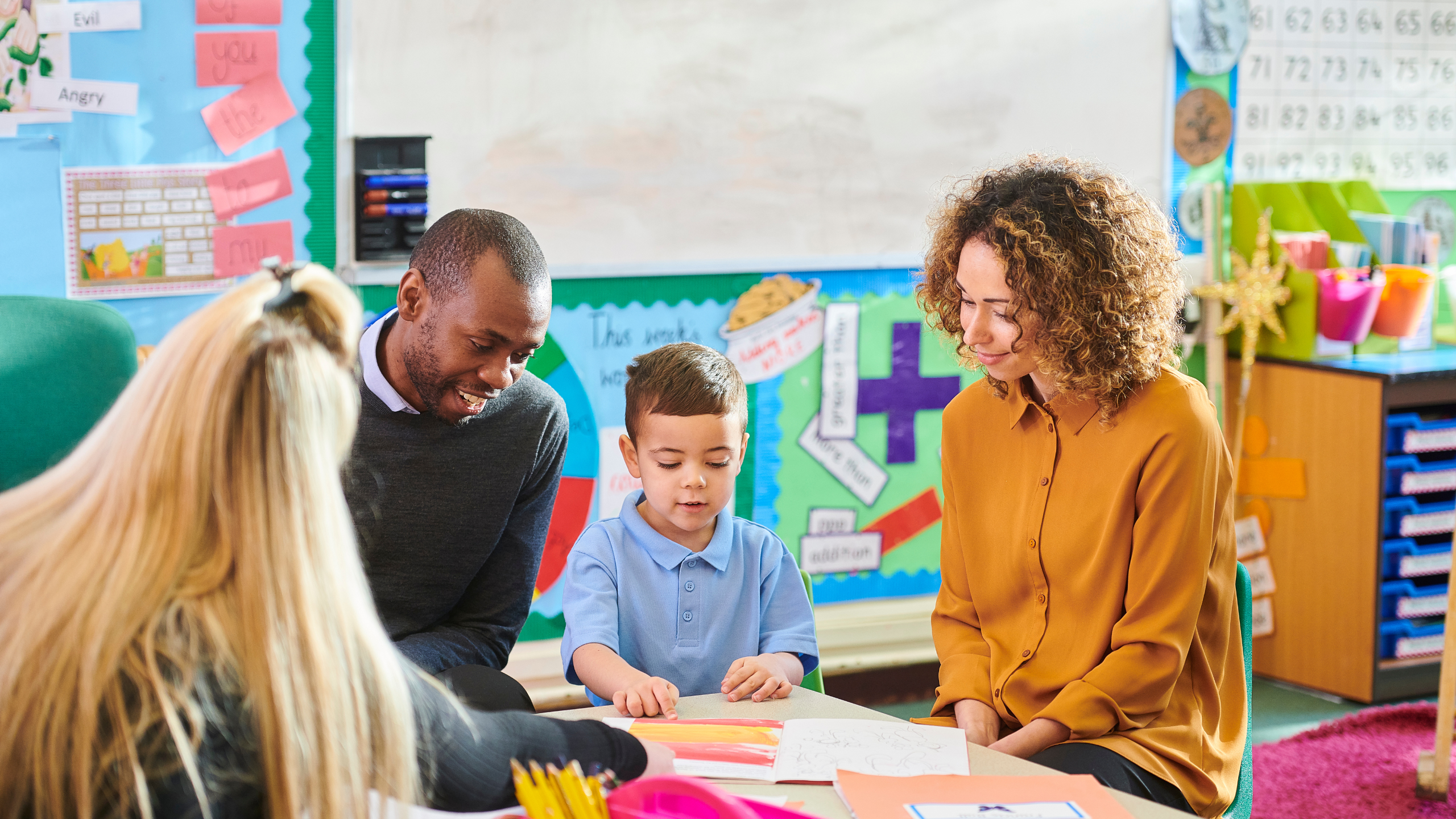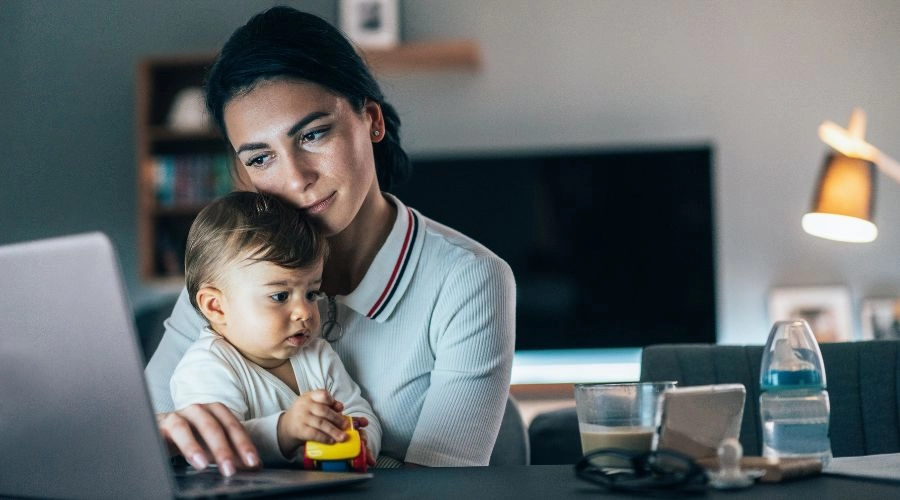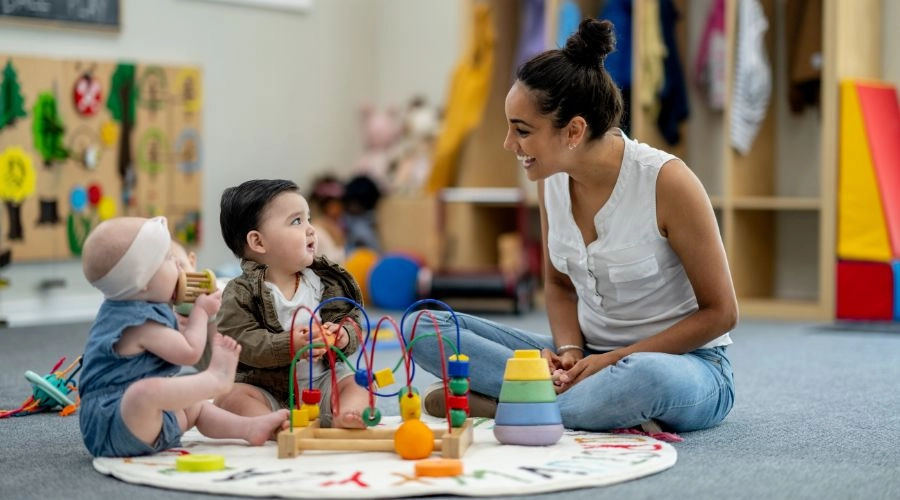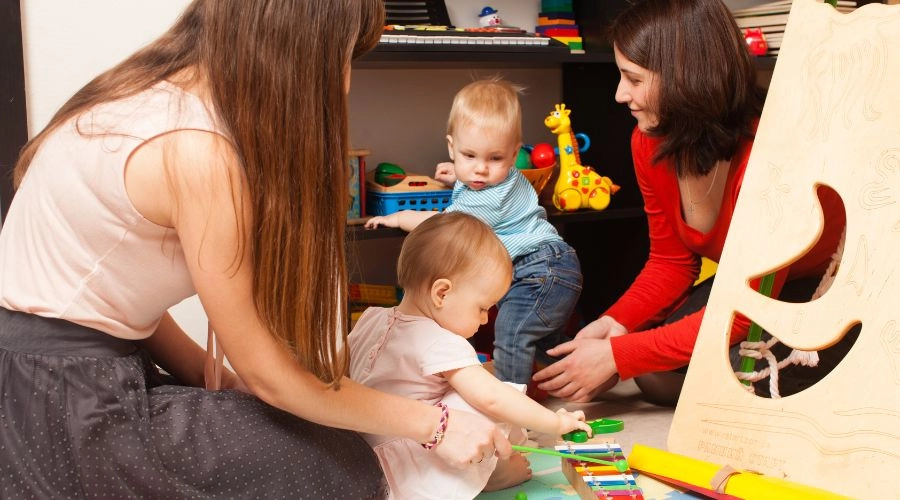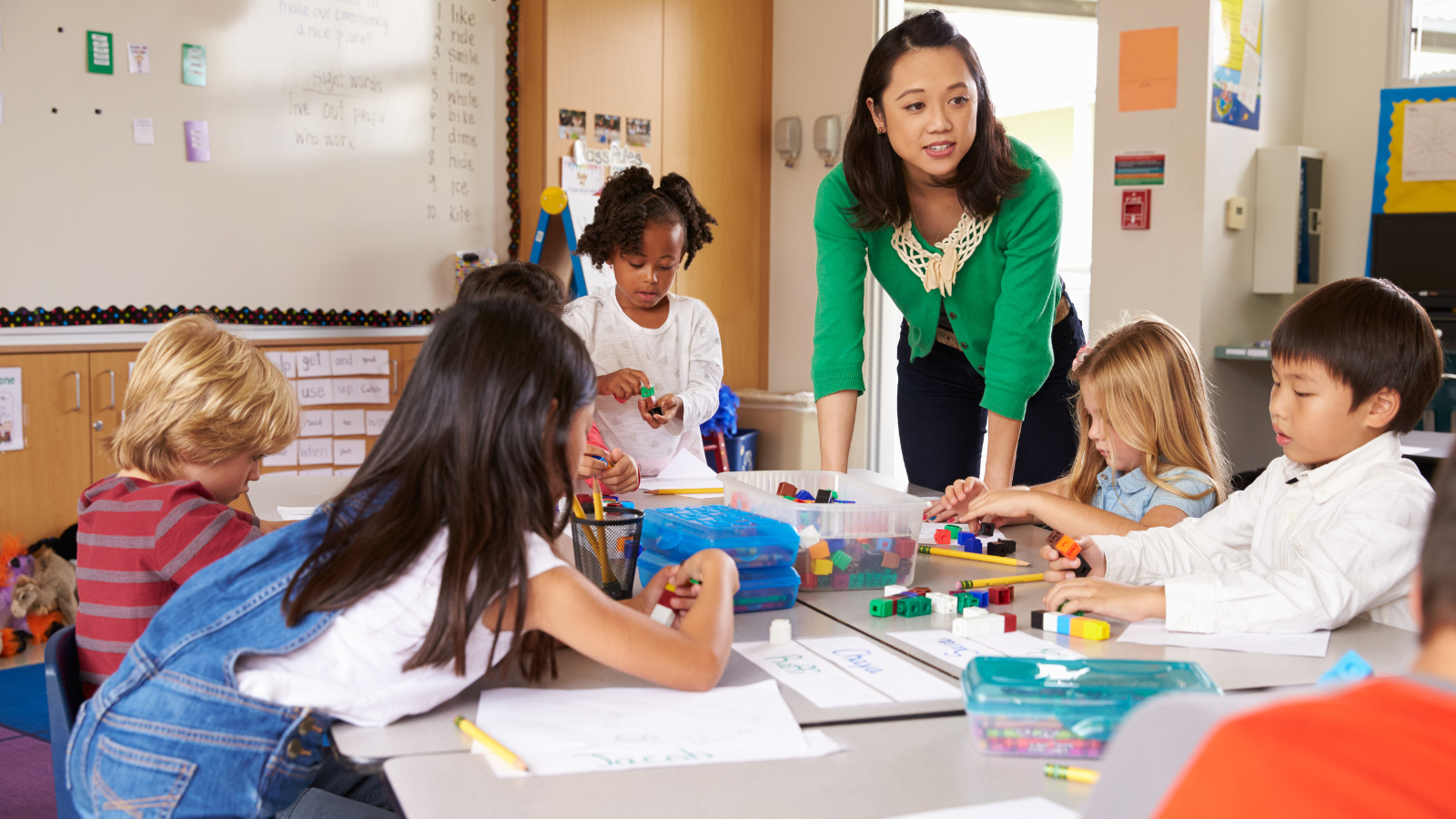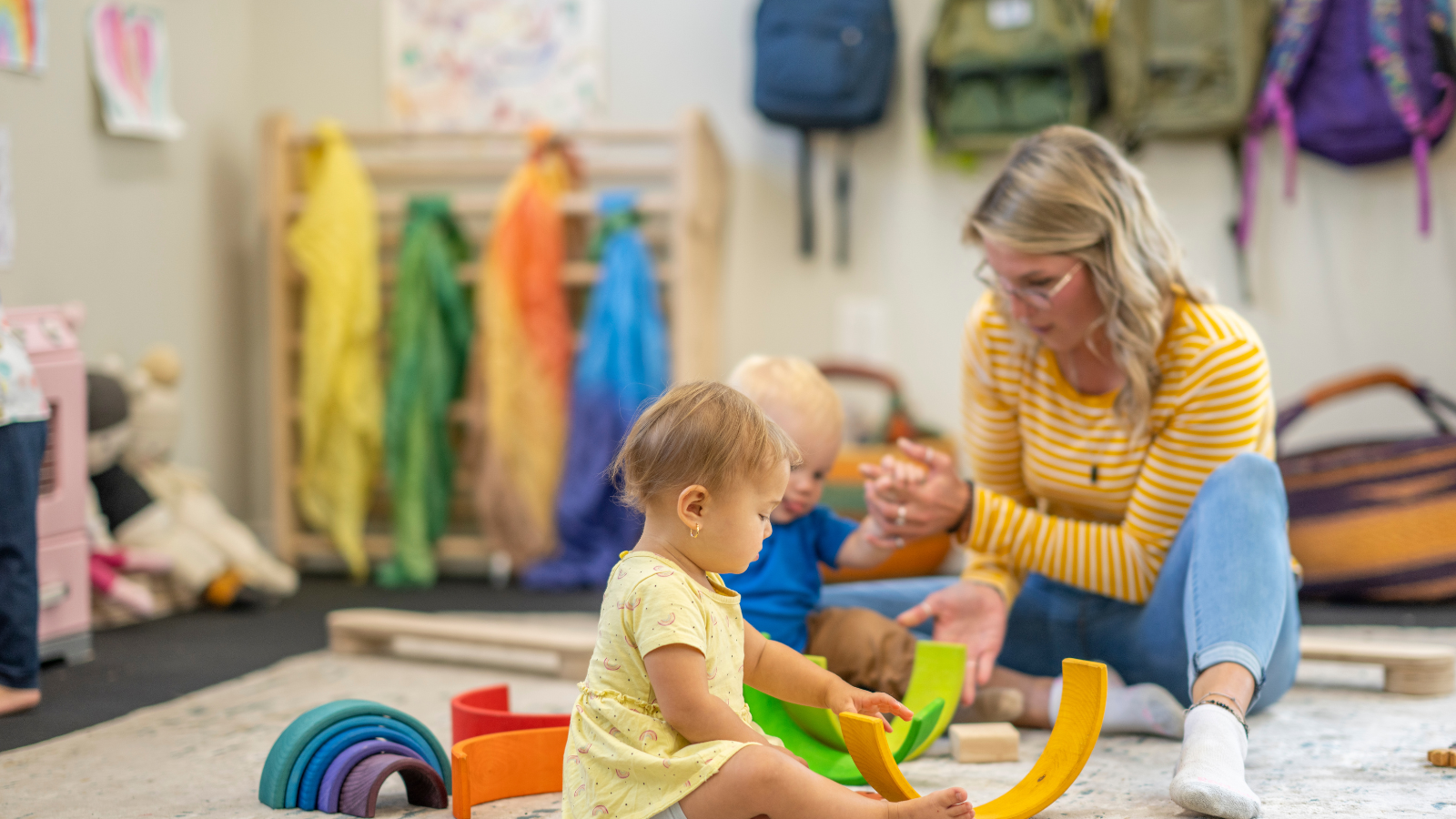Separation anxiety happens to both kids and adults. Kids feel worried when they’re away from their parents or caregivers. This feeling is even more vital when kids attend school or daycare. It might be difficult for guardians and educators to deal with. To help, we need to understand why kids feel this way and find ways to make them feel better. By teaching parents and teachers how to handle separation anxiety, we can make it easier for kids to adjust to new places and feel confident exploring the world independently. Daycare & Preschool in Paramus, NJ Jumpin’Jax offers an innovative preschool program combining age-appropriate learning with fun activities for children aged 6 weeks to Pre-Kindergarten. Our warm, safe environment ensures kids learn comfortably and with confidence.
What Is Separation Anxiety?
Separation anxiety is something most kids go through, usually starting when they’re around 8 to 14 months old and peaking between 18 months and three years. It happens when a child feels upset or worried about being away from their primary caregiver. They might cry, cling to their caregiver, or not want to attend school or daycare. Even though it can be challenging for kids and parents, it’s normal. It shows that the child is becoming more aware of their surroundings and closer to their caregiver. This highlights how important it is to build strong bonds and give support during times when kids are dealing with changes or being apart from loved ones.
How To Help Parents Handle Separation Anxiety
For parents, seeing their children upset when they leave can make them feel sad and worried. However, there are things parents can do to help both themselves and their children feel better. Parents need to stay calm and comfort their children when saying goodbye because how they act can affect their child’s feelings. Also, a regular schedule can help everyone feel more secure and less anxious. When parents create a stable and comforting environment, they can help their children feel happier and more confident.
Common Causes and Reassurance
Kids often feel separation anxiety because they’re scared of new things, like being in a strange place or not being with their primary caregiver. Letting parents and teachers know these feelings are normal and won’t last forever can help ease worries and make everyone feel better. It’s also important to remember that feeling attached to their caregiver is good. Knowing this can give everyone more confidence to handle being apart. Recognizing the strong bond between kids and their caregivers helps both sides feel more robust and better deal with separation.
Practical Strategies for Easing Transitions
Besides knowing why separation anxiety happens, simple strategies are essential to help kids feel better in new places. Saying goodbye with special hugs or kisses creates a routine that shows it’s only temporary, making kids feel safe and calm. Having photo albums or books with pictures of loved ones can make kids feel connected, reminding them of home even when they’re apart. Also, giving kids things like their favorite toy or blanket in new places helps them feel more comfortable and secure, even when everything else is different. These little tips may have a significant impact on helping kids cope with separation anxiety.
Communication Techniques for Collaboration
Alongside understanding why separation anxiety happens and giving comfort, talking well between parents and teachers is super important in helping kids through separation. Keeping parents updated on how their children are doing helps them feel connected and calm when apart. Also, sharing ideas for keeping things the same at home and school, like having similar routines and praising good behavior, makes it easier for kids to adjust. Working together like this ensures kids get the same support and care wherever they are, which helps them feel better emotionally and stay stable.
Here are four practical tips for parents and teachers to help manage separation anxiety in young children:
- Establish Consistent Routines: Consistency in daily routines can give children a sense of security and predictability. Create a structured goodbye ritual to ease transitions, such as a special hug or a reassuring phrase, at home and in the classroom.
- Encourage Positive Associations: Foster positive associations with the new environment by highlighting fun activities or friends the child will encounter. Encourage parents to talk enthusiastically about school or daycare and share stories about their positive experiences.
- Offer Transitional Objects: Provide children with a comforting item from home, such as a favorite toy, blanket, or family photo album, to ease the separation. Having a familiar object can provide comfort and serve as a source of reassurance in unfamiliar settings.
- Communicate Openly: Maintain open lines of communication between parents and teachers to share observations and strategies for supporting the child’s emotional well-being. Regular updates on the child’s progress and emotional state can help both parties feel more connected and informed.
Conclusion
Separation anxiety is a natural part of child development that can be challenging for both parents and teachers to navigate. Parents and teachers can help support children through this process with confidence and compassion by understanding separation anxiety and implementing practical strategies for easing transitions. Effective communication and collaboration can create a nurturing atmosphere that fosters all children’s emotional health and well-being.

